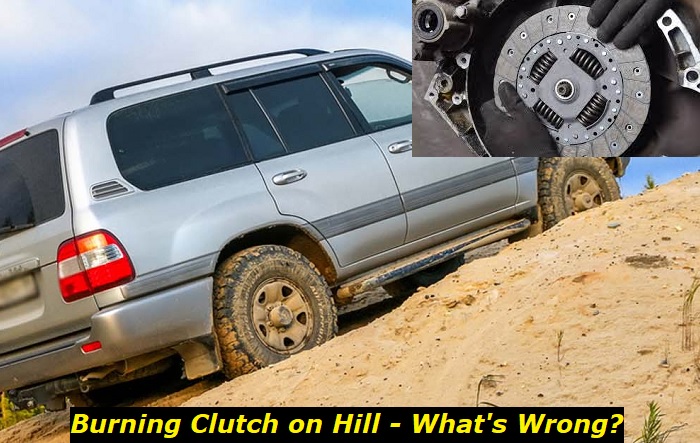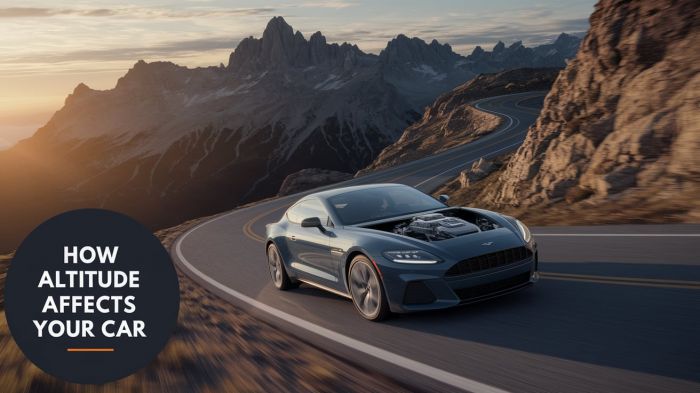If you own or drive a manual car or truck, you may occasionally catch the smell of the clutch. The clutch plays a critical role in ensuring the engine and the transmission work together and harmoniously. You can smell the clutch for various reasons.
Our article investigates why your vehicle's clutch can burn on a hill. Many people encounter clutch problems when going uphill, and we will look into the reasons for this. We will take a look into the reasons why this is a common problem among manual car drivers and how best one can fix the problem.

The burning of the clutch on a hill is mainly caused by the inability of the driver to hill start. Many novice manual drivers encounter this problem. However, it is worth noting that it is not always the inability of the driver to balance the clutch that can lead to the burning smell. The condition of the clutch and other factors will determine how effectively you can hill start.
To get a good understanding of why a burning clutch problem is common on a hill start, we will need to appreciate how the clutch of a manual car works. We will also need to highlight the importance of a driver's habits in determining how effective and long a clutch can work.
The burning clutch on hill problem
Driving a manual vehicle requires that the driver understand how the clutch, the accelerator, and the brake pedal work in relation to one another. At a hill start, where you have to make a stationary vehicle start going uphill, knowing how these three pedals work and even the handbrake is crucial.
If you are a newbie in driving a manual transmission vehicle, you will have a tough time balancing the clutch. Ideally, when hill starting, you should depress the clutch and brake. You should then release the clutch slowly until you start feeling it start to bite. Step on the accelerator at slightly higher revs when pulling off because you are moving up a hill. At the same time, release the clutch gradually.
If the release of the clutch is not done right, a burning smell will be noticeable. This is because the clutch is still in contact with the flywheel and other parts when you step on the gas. If you live in a hilly place, and the traffic is mostly stop-and-go, you will need to master the balancing act of the clutch, the brake, the accelerator, and the parking brake.
Unlike those considered passive, aggressive drivers are likely to encounter this clutch problem. At a hill start, there are those drivers who pull away without having to rely on the parking brake. Some will even prevent the vehicle from back-rolling or stalling by simply balancing the clutch and the brakes. But in all instances, when a driver is unable to pull away properly and leaves the clutch hooked to the transmission, there will be a burning smell coming from the clutch.
What causes the clutch to produce that burning smell?
How long a clutch lasts is determined by a number of factors, among them the driving conditions and your driving habits. Their clutch is likely to last a lifetime for a person who mostly drives in the city and never encounters steep inclines and hills. A driver who lives in the countryside often has to encounter hills and drive through gravel, muddy, or snow-covered stretches; then, the clutch may last a mere 20,000 miles.
Here are the leading reasons why a burning smell can come from the clutch;
1) Incorrect hill start
As stated earlier, moving from a complete start for a manual transmission vehicle requires the driver to have mastered balancing the clutch, the brake or parking brakes, and the acceleration. This is especially critical when it comes to hill start. When you notice a burning smell at a hill start, you should know you are likely burning the clutch.
A hill start often requires the driver to rev harder while at the same time riding the clutch. Failure to disengage or engage the clutch at the right time will cause the vehicle to roll back. This technique can damage your clutch, and that is why you need to use the handbrake at a hill start.
Solution
A handbrake is important at a hill start because it lets you easily find the clutch's 'biting point.' This technique requires that once you feel the pull forward slightly, release the handbrake and the clutch simultaneously while applying enough revs to pull the vehicle up the hill. This technique saves you from rolling back because the vehicle starts moving at the exact point when the clutch is disengaged, and the gear is in. Normally, the right gear for a hill start is the 1st gear.
2) A damaged clutch
A bad clutch is likely to cause a burning smell. A bad clutch will fail to engage gears and can cause the vehicle to stop accelerating normally. In the case of a hill start, a bad clutch will not engage with the required gear and, at times, produce that burning smell of toast.
Solution
The best way to fix this problem is to replace the clutch. A clutch replacement will cost you around $1,500, even though the price can double or drop depending on your car's clutch.
3) Faulty hill assist
Hill assist is a technology found in many modern vehicles and designed to help you escape the nerve-wracking experience of coming from a standstill position on a hill. Hill assist helps you start your vehicle smoothly and safely on an incline. This feature ensures that your car does not roll backward when you release the brake pedal as you press the accelerator pedal.
The hill assist feature temporarily holds your vehicle's brakes when it's stopped on an incline. This gives the driver time to accelerate smoothly from a stationary point. The vehicle is prevented from rolling backward or stalling as you try to juggle between the brake, the accelerator, and the clutch pedal.
The hill assist automatically engages when the clutch disengages and the brake is applied for over a second. Of course, the vehicle senses if it's on an incline for this feature to come into play. When the hill assist feature malfunctions, it may fail to apply the brakes as expected, leading you to trouble in a hill start. The clutch may start wearing off and producing a burning smell, meaning that it is getting damaged.
Solution
The malfunctioning of the hill assist will affect a new driver more than an experienced one. You might also encounter trouble if you have never driven a vehicle with no hill assist. The solution to this issue is to have a mechanic look into the problem. The hill assist fuse can be blown, and replacing it will solve the issue. The mechanic should establish whether the clutch is extensively damaged or can serve even after correcting the hill assist issue.
4) New clutch
A new clutch has never been a problem when you are on a hill start. However, you may have replaced the bad clutch with a new one. But rather than enjoying the effectiveness of the new clutch, you start noticing a burning smell. If you have been on the road long enough, you immediately know the clutch is the source of this smell. Coincidentally, this burning smell can become more pronounced on a hill start.
Solution
A qualified mechanic will install a new clutch and make all the necessary adjustments. If you start noticing the burning smell after picking up your car, confirm whether the clutch pedal feels normal. If so, continue driving, and the smell will go away on its own in a few days. The smell comes when the mechanic fails to clean the pressure plates with a brake cleaner. The rust coatings, normally found on new pressure plates, will be rubbed off over time.
5) Changing gear incorrectly
Driving up a hill, especially with a load, can be challenging for many drivers. Despite knowing when to change gears, many drivers of manual vehicles make the mistake of changing gears when the vehicle has not attained enough momentum when going uphill.
Going uphill for a rigid truck when loaded might require you to engage the 1st gear. If the hill is steep, you may have to wait until the vehicle has cleared the hill. Sometimes, you might feel or hear that the truck has gained enough momentum, and a lighter gear can take over. A new driver might mess around at such a juncture, and the clutch might be the culprit.
Solution
There is nothing much one can do with regard to the vehicle other than check whether the clutch has been damaged. However, the driver must acquaint themselves with more knowledge on how to drive up a hill, especially if the vehicle is under load.
Conclusion
Burning the clutch on hill is a problem that can lead to more serious issues like gearbox damage and engine malfunctioning. Even though every new driver of a manual vehicle has experienced this hiccup at one point or another, it is an easy problem to solve and even overcome. Depending on what is causing the clutch to burn, the above-suggested solutions should help you handle the issue.
About the authors
The CarAraC research team is composed of seasoned auto mechanics and automotive industry professionals, including individuals with advanced degrees and certifications in their field. Our team members boast prestigious credentials, reflecting their extensive knowledge and skills. These qualifications include: IMI: Institute of the Motor Industry, ASE-Certified Master Automobile Technicians; Coventry University, Graduate of MA in Automotive Journalism; Politecnico di Torino, Italy, MS Automotive Engineering; Ss. Cyril and Methodius University in Skopje, Mechanical University in Skopje; TOC Automotive College; DHA Suffa University, Department of Mechanical Engineering






Add comment